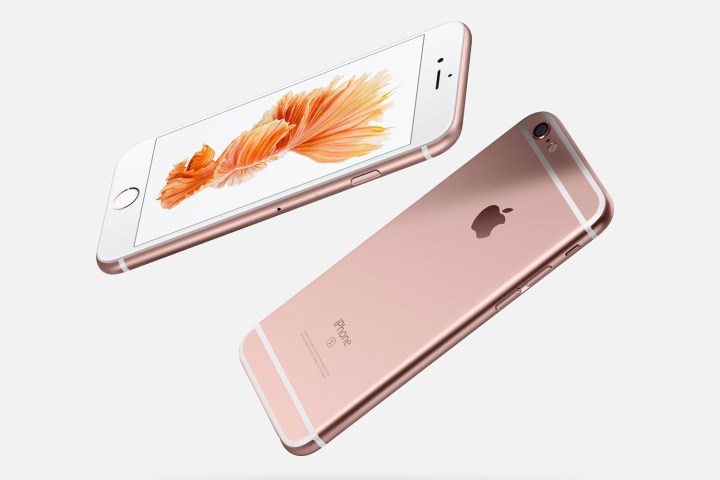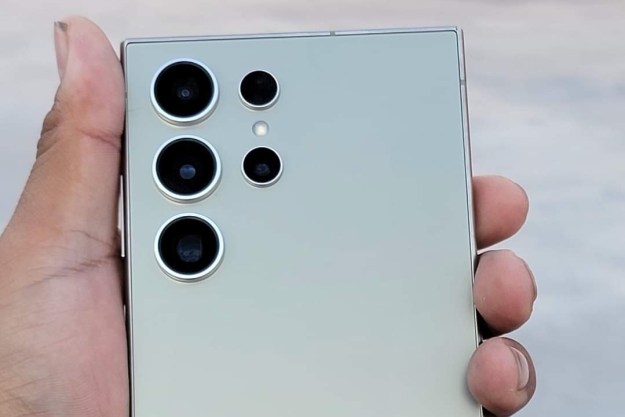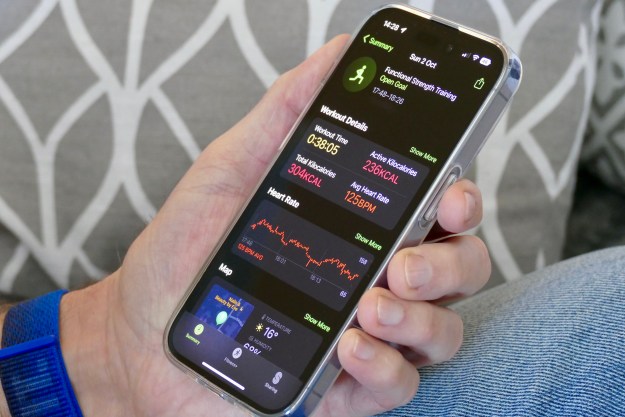Apple is the well-respected design king, but Samsung’s designers has upped their game over the past few years. But perhaps you don’t care about design, and would rather opt for the phone with the most robust hardware under the hood. Both devices are at the top of their game; read on to find out which one is better for you.
Specs
|
|
Galaxy S7 Edge |
|
| Size | 158.2 × 77.9 × 7.3 mm (6.23 × 3.07 × 0.29 in) | 149 × 72 × 7.62 mm (5.85 × 2.85 × 0.30 in) |
| Weight | 6.77 ounces | 5.54 ounces |
| Screen | 5.5-inch LCD | Dual-edge, 5.5-inch Quad HD Super AMOLED |
| Resolution | 1,080 × 1,920 pixels, 401ppi | 1,440 × 2,560 pixels, 534ppi |
| OS | iOS 9 | Android 6.0 Marshmallow |
| Storage | 16/64/128GB | 32/64GB |
| SD Card Slot | No | Yes |
| NFC support | Yes, but only for Apple Pay | Yes |
| Processor | 64-bit Apple A9 processor, M9 Motion coprocessor |
Qualcomm MSM8996, Snapdragon 820 (U.S.) / Exynos 8890 Octa (Int’l.) |
| RAM | 2GB | 4GB |
| Connectivity | Wi-Fi, GSM, CDMA, HSPA, EVDO, LTE-A | Wi-Fi, 4G LTE, HSPA+ |
| Camera | Front 5MP, Rear 12MP | Front 5MP, Rear 12MP |
| Video | 2,160p 4K UHD | 2,160p |
| Bluetooth | Yes, version 4.2 | Yes, version 4.2 |
| Fingerprint sensor | Yes | Yes |
| Water Resistant | No | Yes |
| Battery | 2,750 mAh | 3,600 mAh |
| Charger | Lightning | Micro USB |
| Quick Charging | No | Yes |
| Wireless Charging | No | Yes, Qi and PMA |
| Marketplace | Apple App Store | Google Play Store |
| Color offerings | Silver, gold, space gray, rose gold | Black, white, silver, gold |
| Availability | AT&T, Verizon, Sprint, T-Mobile | AT&T, Verizon, Sprint, T-Mobile |
| DT Review | 4.5 out of 5 stars | 4 out of 5 stars |
When it comes to specs, the
As far as storage goes, the Galaxy S7 Edge starts with 32GB versus the measly 16GB in the
Samsung dominates in the
As far as overall specs go, it’s a tie, with each device showcasing its own strengths and weaknesses.
Winner: Tie
Camera
The cameras on the two devices may look the same at first glance, but Apple has long been hailed for the image quality of its cameras. Not only that, but megapixels aren’t the only thing to compare.
Both of the devices offer rear-facing cameras with 12MP sensors — Samsung actually scaled back from the 16MP sensor in the Galaxy S6 Edge. There’s a good reason for doing this: Samsung has actually made its pixels larger, which, combined with an f/1.7 lens, boosts the brightness of the sensor, producing much better lit photos. This is especially important in low-light situations. Thanks to the device’s Dual Pixel technology, the Galaxy S7 Edge has been praised for its ability to quickly autofocus on a subject.
The camera in the
Despite the fact that Apple devices traditionally offer great image quality, we’re going to hand this one to Samsung. The Galaxy S7 Edge is just able to navigate different situations than the
Winner: Samsung Galaxy S7 Edge
Battery life and charging
On paper, the Galaxy S7 Edge is the clear winner here. After all, it has a battery capacity of 3,600mAh, which is a bit more than the iPhone’s 2,915mAh capacity. In reality, however, battery life is a lot more complex, and depends heavily on the display, operating system, usage, and more. Still, most tests put the Galaxy S7 Edge well ahead of the
Throw in the additional technologies Samsung includes in its devices and you’ve got a clear winner. The Galaxy comes with support for the two leading wireless charging standard, Qi and PMA (a standard from the Power Matters Alliance). Either enables you to plunk a phone down on a charging station and immediately juice up, without fumbling for a power cable. Then there’s quick charging, which zips most of the power you’ll need to your phone in seconds. These are solid features that clearly push Samsung ahead.
Winner: Samsung Galaxy S7 Edge
Display

Once upon a time, Apple was the king of the smartphone display. When it first introduced the “Retina Display,” the tech world was abuzz with excitement. However, Apple really has backed itself into a corner as of late. The company either has to improve its battery capacity to support better displays — which would likely increase the thickness of its devices — or admit that it has lost its throne when it comes to display quality.
Both devices technically offer a 5.5-inch display, although the Samsung does so only because it curves around the edge. The iPhone’s display is larger when it comes to practical use. As you’ll see, that’s the only reason to choose the
The Galaxy S7 Edge offers a display with a hefty 1,440 × 2,560-pixel resolution, which is impressive on its own, let alone compared to the 1,080 × 1,920-pixel resolution of the
The extra edge on the Galaxy S7 Edge is what really gives it a boost over the
Winner: Samsung Galaxy S7 Edge
Software and usability
This one’s clearly a matter of personal preference. There’s no point in getting into the whole Android vs. iOS debate here, but we’ll run through the highlights. If you’re more into OS customization and personalization, the Galaxy S7 Edge is probably your pick. The Galaxy S7 Edge deviates slightly from Google’s “stock
That touches on an important point — usability. Apple’s iOS is generally considered the more usable operating system, and for good reason. It’s simple, easy to look at, and overall beautiful. That’s not to say
One of the most important things you should consider is apps — and fortunately, neither of these two platforms really offers anything over the other. Apple is a lot more restrictive when it comes to the apps it allows onto the App Store, and while that could be perceived as a good thing that keep the junk out, it also means the Google Play Store generally offers a more expansive collection of apps, even if you have to wade through the trash to get to the gold. However, developers write for the App Store first, and new stuff tends to appear there before it shows up on
An important thing to note when it comes to apps is that
We’re not going to give one or the other the winning vote here.
Winner: Tie
Design and durability
Although the Galaxy S7 Edge is a very sexy looking device, the
The curved glass on both the front and back of the Galaxy S7 Edge would be expensive to replace if you broke it. Metal phones tend to be more durable, which is something to consider. However, the metal build of the iPhone prevents it from handling wireless charging, a feature that Samsung’s Galaxy S7 Edge proudly boasts. The Galaxy S7 Edge is also water resistant, thanks to its IP68 rating. The iPhone, on the other hand, doesn’t play nice with water.
The
The Galaxy S7 Edge screams class with its sleek curved edge, and it shows just how much Samsung has evolved over the years. No longer are Samsung devices strictly reserved for the
When it comes down to it, both of these devices are gorgeous in their own way. The
Winner: Tie
Price
Both devices are currently available for purchase, and the
You’re going to be paying a little extra for that Edge technology if you opt for the Galaxy S7 Edge, with prices starting at around $720 for an unlocked device unlocked. Below are the prices for each of the main carrier networks.
- AT&T: The iPhone 6S Plus comes at $750 at full price, or $25 per month for 30 months. The Samsung Galaxy S7 Edge costs $795 at full price, or $26.50 per month for 30 months.
- Verizon: The iPhone 6S Plus comes at $750 at full price, or $31.24 per month for 24 months. The Samsung Galaxy S7 Edge costs $792 at full price or $33 per month for 24 months.
- Sprint: The iPhone 6S Plus costs $750 at full price, or $31.25 per month for 24 months. The Samsung Galaxy S7 Edge also costs $750 at full price, or $31.25 per month for 24 months.
- T-Mobile: The iPhone 6S Plus costs $750 at full price, or $31.25 per month for 24 months. The Samsung Galaxy S7 Edge costs $780 at full price, or $30 per month for 24 months.
Winner: Apple
Winner: Samsung Galaxy S7 Edge
Overall, the winner is the Samsung Galaxy S7 Edge. The device may not beat the
Editors' Recommendations
- This is our best look yet at the iPhone 16’s big design changes
- Best Samsung Galaxy S24 deals: Save up to $800 on the phone
- The best iPhone 15 Plus cases in 2024: 15 best ones right now
- Don’t buy a Galaxy S24 Ultra or iPhone 15 Pro Max. Do this instead
- The best iPhones in 2024: which iPhone is right for you?




